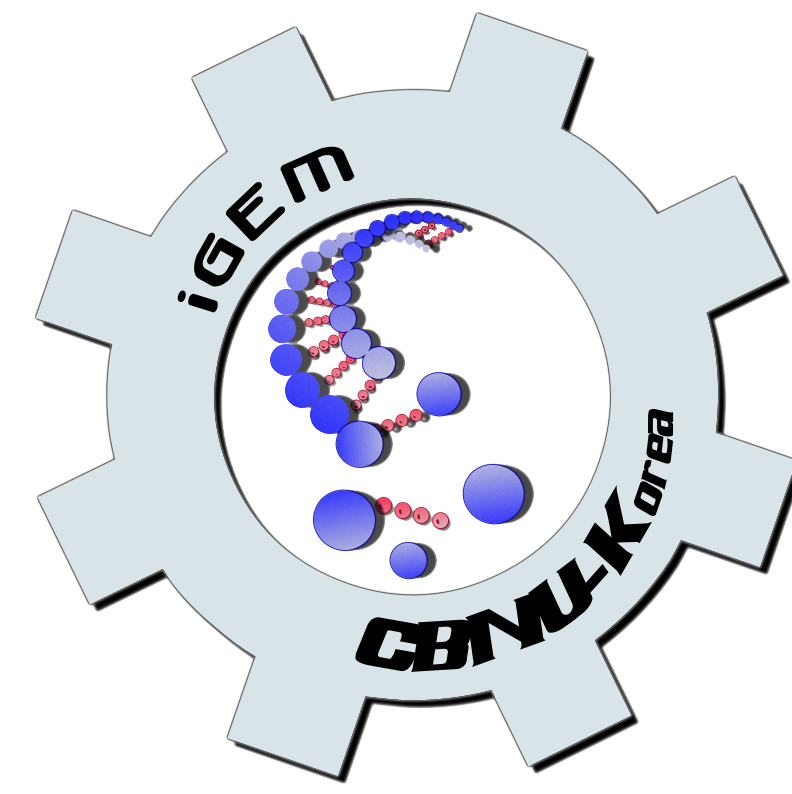Team:Yeshiva NYC/Project
From 2009.igem.org
| You can write a background of your team here. Give us a background of your team, the members, etc. Or tell us more about something of your choosing. | |
|
Tell us more about your project. Give us background. Use this is the abstract of your project. Be descriptive but concise (1-2 paragraphs) | |
| Team Example 2 |
| Home | The Team | The Project | Parts Submitted to the Registry | Modeling | Notebook |
|---|
(Or you can choose different headings. But you must have a team page, a project page, and a notebook page.)
Overall project
Your abstract
Project Details
To achieve our final goal, we first had to make cells whose periplasmic membrane would allow our reporter proteins through to the periplasm. Rafi needed to increase the permeability of the periplasm. Previous studies have shown that mutation of the Braun Lipoportein, expressed by the lpp gene, can increase the permeability of the cell. The approach taken was one in which the lpp gene was deleted using Red/ET recombination.
Next, the reporter molecules needed to be made, and Faige grabbed the reins for this stage. To make the proteins, she started by extracting the genomic DNA from XL1-Blue cells for use in most of the later PCR reactions and transforming cccdB vectors into survival cells. She grew 3 different types of ccdB, all identical except for resistance. One was kanamycin, one was chloramphenicol, and one was ampicillin resistant. After transforming the vectors into the cells, growing colonies from them, making overnights of the colonies, and miniprepping the overnights, she was ready to move on to adding parts. She found leader sequences that were likely to carry her proteins to the membrane (how did we find them, Dr. Mike?) made them into simple Biobricks, ligated to ccdB Cam vectors. She also found a promoter, T7, and a ribosomal binding site (RBS) (Biobrick B0030) and ligated those two into ccdB Cam. This DNA, known as “F DNA”, would be ready for leader sequences to be attached to it when ready. She had chosen eight leader sequences to transform into Biobricks, but only six of them worked (mostly with some tweaking of annealing temperatures), so she decided to go ahead with those six and leave behind the other two. After ligating each leader sequence with ccdB vectors, she ligated those Biobricks with her F DNA to make a combination of promoter, RBS, and leader sequence that was ready to have a protein attached to the back. Here we ran into some trouble; we had chosen an RFP mutant (Biobrick E1010) and a cytoslac protein to attach to the leader sequences, which sounded simple enough but turned out to be harder than it seemed. We ordered primers for the RFP and ran PCR on them, but when we ran the PCR product in a gel, the result showed that the piece was 900 bp, while the Registry of Standard Parts claimed that it was only ~700 bp. Many of the above steps had taken extra tweaking to complete and more time than expected for trouble-shooting, so at this point we were running out of time and decided to go ahead with the RFP despite the strange gel result. Faige ligated the RFP to each leader sequence + promoter + RBS combination and hoped it would work. The ligation tested positive with colonies on the plates, so after miniprepping the DNA, she went ahead and transformed the DNA into BL21 DE3 cells to test for expression (we usually use XL1-Blue for transformations). She streaked the cells onto plates coated with IPTG and also put some IPTG onto plates that already had colonies of BL21 DE3 cells growing, but the colonies that grew were not red, as they should have been with RFP expression. She also tried a liquid culture of the cells in 2XYT media (we usually use LB media) and IPTG, but the cells that grew were not red. In the meantime, she was also attempting to attach the cytoslac protein to the leader sequences and it was working so far, but then she realized that her final result would be Kan resistant, as are Rafi’s weakened cells that her results would need to be transformed into. We select our positive ligation products by transforming into destination plasmids or cells with a resistance different from that of the inserts, so this was a problem. The cytoslac DNA’s resistance would have to be removed in order for the system to work. To do this, Faige digested cytoslac DNA in preparation for a 3-way ligation and then ran the digest on a gel, extracting the insert containing cytoslac and leaving behind the plasmid containing the resistance. She then ligated this extracted DNA to a leader sequence into non-Kan resistant ccdB. At the same time, she continued her ligation with the cytoslac that had the wrong DNA, so that she could later cut out the resistance, in case the first method of changing resistance didn’t work. These colonies didn’t grow well, so we stopped this method and continued with the gel-extraction instead, which did seem to be working well.
 "
"

